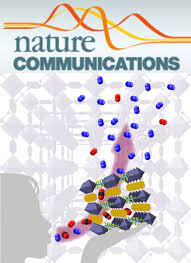Nat Commun. 2023 Jul 5;14(1):3970. doi: 10.1038/s41467-023-39606-y.
Spinal cord repair is modulated by the neurogenic factor Hb-egf under direction of a regeneration-associated enhancer
Valentina Cigliola1,2,3, Adam Shoffner1,2,4, Nutishia Lee1,2, Jianhong Ou1,2, Trevor J Gonzalez5, Jiaul Hoque6, Clayton J Becker1,2, Yanchao Han7, Grace Shen1,2, Timothy D Faw1,6,8, Muhammad M Abd-El-Barr9, Shyni Varghese6,10,11, Aravind Asokan1,4,5,11, Kenneth D Poss12,13
Affiliations
1Duke Regeneration Center, Duke University, Durham, NC, USA.
2Department of Cell Biology, Duke University Medical Center, Durham, NC, USA.
3Université Côte d’Azur, Inserm, CNRS, Institut de Biologie Valrose, Nice, France.
4Department of Surgery, Duke University Medical Center, Durham, NC, USA.
5Department of Molecular Genetics and Microbiology, Duke University School of Medicine, Durham, NC, USA.
6Department of Orthopedic Surgery, Duke University School of Medicine, Durham, NC, USA.
7Department of Cardiovascular Surgery of the First Affiliated Hospital and Institute for Cardiovascular Science, Soochow University, Suzhou, Jiangsu, China.
8Duke Institute for Brain Sciences, Duke University, Durham, NC, USA.
9Department of Neurosurgery, Duke University Medical Center, Durham, NC, USA.
10Department of Mechanical Engineering and Materials Science, Duke University, Durham, NC, USA.
11Department of Biomedical Engineering, Duke University, Durham, NC, USA.
12Duke Regeneration Center, Duke University, Durham, NC, USA.
13Department of Cell Biology, Duke University Medical Center, Durham, NC, USA.
Abstract
Unlike adult mammals, zebrafish regenerate spinal cord tissue and recover locomotor ability after a paralyzing injury. Here, we find that ependymal cells in zebrafish spinal cords produce the neurogenic factor Hb-egfa upon transection injury. Animals with hb-egfa mutations display defective swim capacity, axon crossing, and tissue bridging after spinal cord transection, associated with disrupted indicators of neuron production. Local recombinant human HB-EGF delivery alters ependymal cell cycling and tissue bridging, enhancing functional regeneration. Epigenetic profiling reveals a tissue regeneration enhancer element (TREE) linked to hb-egfa that directs gene expression in spinal cord injuries. Systemically delivered recombinant AAVs containing this zebrafish TREE target gene expression to crush injuries of neonatal, but not adult, murine spinal cords. Moreover, enhancer-based HB-EGF delivery by AAV administration improves axon densities after crush injury in neonatal cords. Our results identify Hb-egf as a neurogenic factor necessary for innate spinal cord regeneration and suggest strategies to improve spinal cord repair in mammals.
DOI: 10.1038/s41467-023-40486-5

